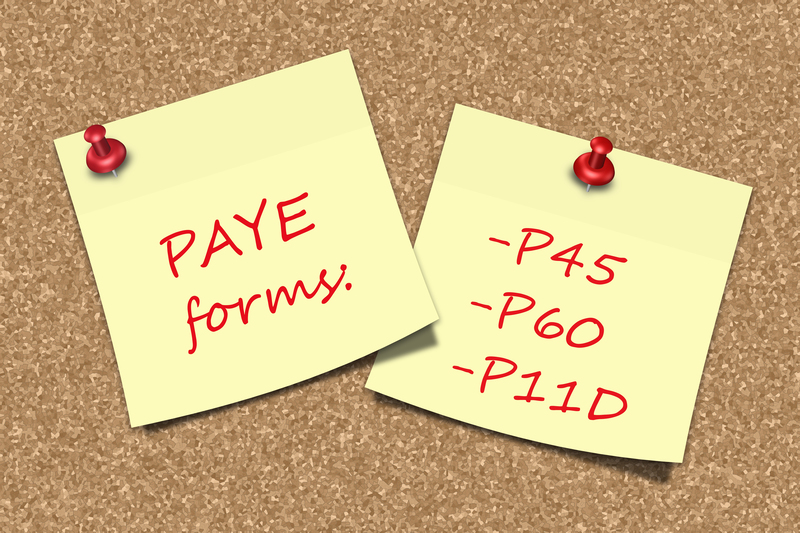Cut the Clutter: A Moving House Decluttering Action Plan
Planning a move? It's the perfect time to evaluate what you own and rid yourself of the extra baggage. Decluttering before moving house not only lightens your load but also makes packing, unpacking, and settling into your new home smoother and stress-free. In this comprehensive guide, we'll walk you through a step-by-step moving house decluttering action plan so you can cut the clutter, save money, and create a fresh start in your new space.
Why Decluttering Before Moving Is Essential
Decluttering isn't just a trend; it's a vital step for anyone preparing to relocate. Here's why:
- Saves Money: Less to move means lower moving costs, whether you hire movers or rent a truck yourself.
- Reduces Stress: Streamlined belongings mean less chaos and fewer decisions during and after the move.
- Makes Packing Easier: Only take what you truly need, making packing less overwhelming.
- Offers a Fresh Start: Start your new chapter with a clean, organized space.
- Helps Others: Donate usable items to those in need instead of letting them gather dust.

When Should You Start Decluttering Before a Move?
The best time to start decluttering is as soon as you know you're moving. Ideally, give yourself at least 4-8 weeks, but even a couple of weekends can make a dramatic difference. Beginning early ensures you aren't rushed, and you'll have ample time to donate, sell, or recycle unwanted items responsibly.
Your Moving House Decluttering Action Plan
This action plan is divided into manageable steps. Follow it to transform your moving process and ensure you leave the clutter behind.
Step 1: Gather Supplies
First, gather everything you'll need for decluttering:
- Sturdy boxes or bags for donations, recycling, trash, and items to sell
- Packing tape and markers
- Sticky notes or colored labels
- Notepad or phone for list-making
- Cleaning supplies for dusting as you go
Tip: Create designated "donate," "sell," "recycle," and "keep" areas in each room for items you sort.
Step 2: Make a Decluttering Plan
For maximum efficiency, declutter room by room. Create a schedule outlining which areas to tackle each day or week. Here's a sample plan:
- Week 1: Kitchen and pantry
- Week 2: Bedrooms and closets
- Week 3: Living room, dining room, and hallway
- Week 4: Basement, attic, garage, and storage areas
Customize this plan for your unique home--some spaces may need more or less time, depending on how much you've accumulated.
Step 3: Ask the Right Questions
When sorting through belongings, use the declutter "decision tree":
- Do I use or love this item?
- Have I used it in the past year?
- Is it in good working condition?
- Could someone else benefit from it?
- Will it fit or suit my new home?
If the answer is "no," let it go!
Step 4: Declutter By Category or Room
You can choose to declutter by category (such as books, clothes, or kitchen gadgets) or by room. Doing so creates focus and quicker results. Here's a breakdown:
- Kitchen: Toss expired foods, duplicate utensils, unused gadgets, chipped mugs, and mismatched containers.
- Bedrooms & Closets: Purge clothes and shoes that don't fit, are out of style, or are worn out. Cull outgrown kids' items and excess bedding.
- Living & Dining Areas: Let go of unused decor, books, magazines, games, DVDs, chunky furniture, and duplicate electronics.
- Bathrooms: Dispose of old makeup, expired medicine, worn towels, unused toiletries, and empty containers.
- Garage, Attic, and Basement: Sort sporting goods, tools, holiday decorations, old paint, souvenirs, and broken appliances.
Step 5: Decide What to Keep, Donate, Sell, or Toss
Once items are sorted, decide:
- Keep: Only what you truly need or love.
- Donate: Gently-used items that could benefit charities or friends.
- Sell: Items in good shape valued at $10 or more (think furniture, electronics, collectibles).
- Recycle: Broken electronics, paper, glass, or clothing where possible.
- Toss: Anything so worn out or broken it can't be reused or recycled.
Take donations to your local charity as soon as possible to avoid second-guessing your decisions.
Step 6: Organize as You Go
As you declutter and pack, group like items together. Label boxes clearly by room and contents, making unpacking a breeze. Use up opened items (cleaning solutions, pantry foods) before moving to reduce waste.
Step 7: Schedule Pickups and Drop-Offs
Many charities and recycling programs offer home pickups for donations. Schedule these in advance so they align with your moving timeline. Arrange for trash or bulk waste pickups for anything left over.
Step 8: Digital Declutter
Don't forget to declutter digitally before moving! Back up essential files, delete unnecessary documents, clear out old emails, and transfer all important digital info (utilities, moving documents, inventory lists, and contacts) to your new device or cloud storage.
Pro Tips for an Efficient Moving Declutter
- Start Small: If you feel overwhelmed, begin with a single drawer or shelf. Momentum builds with small wins.
- Set Timers: Work in focused 30-60 minute sessions with breaks in between to maintain energy and motivation.
- Use the "Moving House Rule": If you wouldn't buy it, pack it, or love it in your new home, let it go!
- Enlist Help: Involve the whole household. Assign age-appropriate tasks to children so everyone is invested in the new beginning.
- Photograph and Remember: Saying goodbye to sentimental items is tough. Take photos or write memories down before parting with them.
- Beware the "Maybe" Box: For items you're truly on the fence about, set them aside. If you don't need them within a set timeframe, it's likely safe to let go.
Decluttering Challenges & How to Overcome Them
Facing roadblocks is common during a moving house decluttering project. Here's how to conquer common obstacles:
"What if I need this later?"
Ask yourself when you last used it, if it can be borrowed, or if it's easily replaceable. Most items are rarely missed once gone.
"It was expensive!"
The money is already spent. Keeping unused items adds to your moving costs and takes up valuable space. Consider it a lesson in mindful purchasing.
Guilt about Gifts or Heirlooms
It's okay to part with things that don't match your current life. The sentimental value is not in the object itself, but the memory it represents. Honor the giver's intent and pass it on to someone who will use it.
Lack of Time
Use the "one box a day" rule. If you have just 10 minutes daily, that's still major progress before moving day arrives.
Dealing With Kids' Belongings
Involve your children--explain moving is a new adventure and let them help sort or donate toys and clothes they've outgrown.
How to Sell, Donate, and Dispose of Unwanted Items
Selling Unwanted Items
- Garage/Yard Sales: Great for larger batches of small household goods.
- Online Marketplaces: Use Facebook Marketplace, Craigslist, or local buy/sell groups for faster local sales.
- Consignment Stores: Perfect for designer clothing, accessories, furniture, or decor.
- Apps: Poshmark, OfferUp, and eBay are ideal for specific or higher-value items.
Price to sell--it's better to get items to a new home quickly than haggle for a few extra dollars.
Donating Items
- Charity thrift stores (Goodwill, Salvation Army)
- Homeless, veterans, or women's shelters
- Libraries (for books in good condition)
- Animal shelters (for towels, blankets)
- Religious and community centers
Eco-Friendly Disposal
- Electronics recycling programs
- Municipal hazardous waste collection for paints and chemicals
- Clothing/fiber recycling bins for unwearable textiles
- Shredding events for sensitive documents
Check local regulations and recycling guidelines to dispose properly and sustainably.
Making Your New Home Clutter-Free From Day One
The ultimate goal of any moving house decluttering action plan is to start life in your new place with intention and order. Here's how to keep clutter at bay after the move:
- Unpack thoughtfully--organize as you go, and resist the urge to stuff everything away "for later.
- Continue the "one in, one out" rule to maintain tidy rooms.
- Schedule regular mini-declutters (e.g., once a month) to prevent buildup.
- Set up dedicated donation boxes in closets or storage areas for ongoing purging.
Clutter-free living isn't about perfection--it's about creating a space that supports your new life and priorities.

Frequently Asked Questions About Decluttering for a Move
How do I motivate myself to start decluttering for a move?
Set a date, create a reward for hitting your goals, or invite a friend for a "decluttering party." Remember, every single item removed is one less thing to pack, move, and unpack.
Should I declutter on my own or hire help?
Many people find DIY decluttering manageable, but if you're short on time or overwhelmed, consider hiring a professional organizer for a few hours' guidance.
Is it better to declutter before or after I move?
Before, whenever possible! It reduces your moving costs and ensures your new home only houses things you truly need and cherish.
How do I stop the cycle of accumulating clutter after I move?
- Adopt regular decluttering habits.
- Be mindful of new purchases.
- Value experiences over things.
Conclusion: Declutter, Move, and Start Fresh!
Moving house is the gateway to a new chapter. By following this decluttering action plan, you'll transform a stressful event into an opportunity for renewal and freedom. Lighten your load, make moving easier, and create a home that truly reflects your values. Cut the clutter--and start your next adventure unburdened, organized, and inspired.
Ready to embrace clutter-free moving? Take action today and enjoy the countless benefits of a simplified, meaningful new home.



